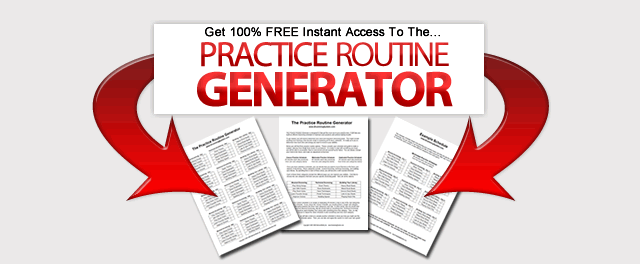Learning How To Read Drum Notation
<<< Back to Learning Drums Articles
Reading Drum Notation
Are there drummers out there who don’t know how to read any sheet music, but are still successful musicians in their industry? Of course! It is possible to learn how to play the drums by ear, using intuition to know where phrases start and stop and how to best articulate the beat. Still, many drummers choose to learn to read drum notation for the versatility factor. If you can’t read notes on a page of written music, you can never recreate someone else’s music for drum set that you haven’t heard before. Memorizing the music of expert drummers is possible to some extent, but in some situations, like playing in a cover band for instance, it will be helpful to read drum music notation.
There is another important reason to learn to read written music for drums. If you can’t read notation, then you can’t write it! This means that you won’t be able to put your ideas on paper to save for the future. Do you really trust yourself to remember that impressive groove that you created for your band’s song six months down the road? Learning to read and write notation is the only way that you can notate what you are playing in a way that will be useful later, and in a way that other musician’s can use if they want to try playing the music that you have created.
To learn the basics, there are lots of methods on reading music notation that are not specific to reading drum notation. These methods are a good place to start and they will provide you with an overview of all music notation. The one drawback here is that many of them focus on reading pitched notation, which is not necessary for drummers. Wind instruments like flute, trumpet, saxophone, etc, must learn to read all of the notes that can be written on a music staff, while drum notation typically contains only enough notes to show the rhythms for the snare, bass, cymbals, and toms. Drum set music is usually written on the same five line staff that other instruments use, but drum notation isn’t standardized in the same way that music for other instruments is, so composers of drum set music often include a legend at the beginning of their music that shows which lines have the music for the different components in the set. There really isn’t a wrong way to assign lines to the parts of the set, as long as there is a clear legend in the beginning that tells the performers what they are looking at so that they can play the music that is written.
There are a few standard practices, such as using an ‘x’ in place of the typical oval shaped note head to indicate that cymbals are used for that note. Also, some auxiliary instruments are notated with a triangle shaped note head, such as the cowbell and the triangle. Generally, music written for the drums that places the stem of the note pointing upward indicates that these notes are somehow played with the hands, while pointing the stems downward shows that the music will be played with the feet.
While drummers don’t have to be concerned with pitches of notes, they do have some other techniques that can be notated that they should be familiar with. A hi-hat note played with the pedal is marked differently on the music staff than a hi-hat that is played as a foot splash (done by clashing hi-hat cymbals together with the pedal and letting them ring.) Other differences in notation indicate crash cymbal, splash cymbal, choked cymbal, ride cymbal, playing on the bell or edge of a cymbal, letting a cymbal ring, ghost notes and stopped drums, rim shot, cross sticking, and playing on the edge of the drum as opposed to in the center.
The internet can be a great resource here, but again, a method book will be your best bet to provide you with the fundamentals of learning to read drum notation. You can use these basics, along with other tools you will pick up as you progress, to read almost any drum notation written. The more music you see and learn, the more techniques you will see written out and begin to understand. The best way to determine whether you have mastered drum notation reading is to try to play a rhythm on your set and write it our yourself in notation. This is known as dictation. Find a fellow drummer and see if they can recreate your groove or fill using the notation that you’ve written. This will let you know if your notation is accurate.
I would suggest you check out Jared Falk's Rock Drumming System. It teaches all about how to read drum notation.
Related Articles and Sites: Reading Drum Notation



